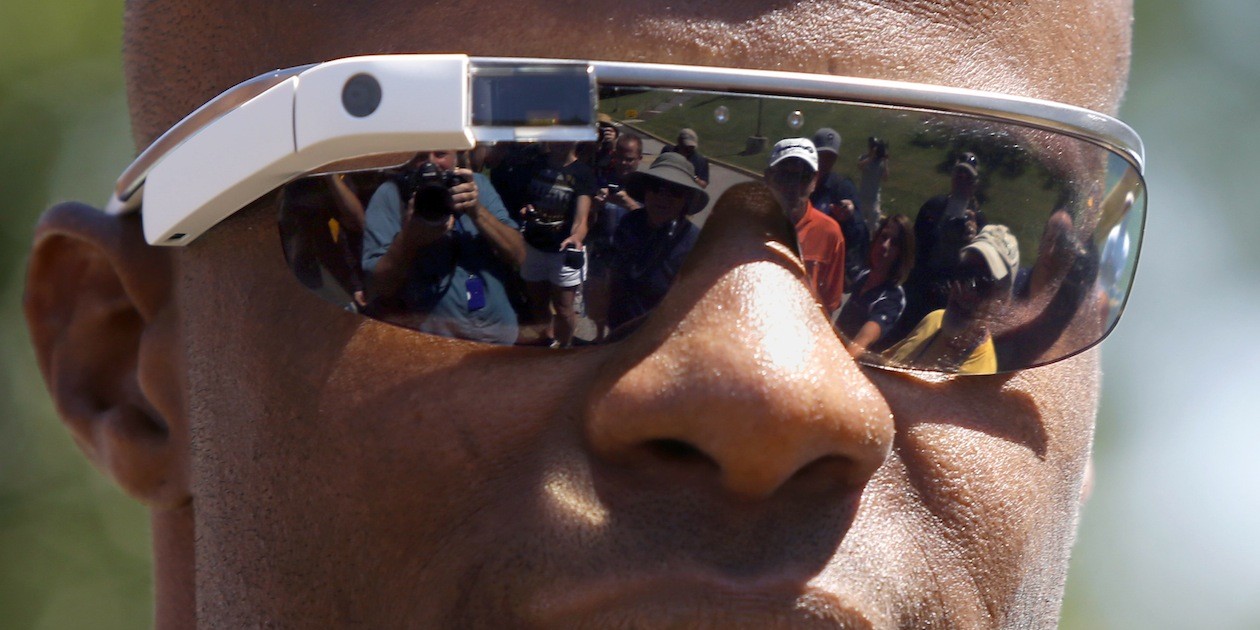Google has abruptly halted sales of Glass to a resounding sneer from the tech press. Given that wearers had gained a reputation as ‘Glassholes’, and that even top publishers like Twitter have abandoned app development on the platform, it was pretty clear the product had already failed to gain traction with a mass audience.
But Google says it’s keeping the dream of Glass alive, with a new R&D team under the leadership of Tony Fadell, who founded smart-thermostat company Nest and was one of the architects of the iPod. It characterized the project as a successful trial run that had been completed, and sent out an email to Glass Explorers (the fancy title you get for owning one) promising it would be back in another form. It doesn’t seem that different with the way Google has experimented with and abandoned dozens of other innovative products, like the Google Wave or even Google+, on its quest to find more and better data about consumers.
For marketers, the failure of Glass (or success, if you’re a glass-half-full type) is a cautionary tale about what consumer wearables can accomplish. If marketers want to use wearables as a platform to reach consumers, they need to understand whether and how they fit into consumers’ lives — otherwise they could end up like U.K. grocery retailer Tesco, which spent a lot of money to release a Glass shopping list app just one day before Google pulled it.
Many writers who jumped in to analyze Glass’ failure focused on its lack of any clear utility. John Brandon at Inc wrote:
“It was a perfect example of making a techie product, calling it an experiment, charging too much, and never explaining why the product even exists or providing guidance about how it might change how you work. It is the worst example of how technology is sometimes a showcase of what can be done just because, without serving any real purpose. It’s proof that there has to be a reason to use something. It has to change how we work or how we stay productive.”
At ZDNet, Larry Dignan argued Glass fell victim to trying to be a faster horse.
“Is there really a benefit reading texts in an eyeglass frame? Google Glass was the first wearable to make it clear that a newfangled device has to make its own way. Smart watches have the same issue. Smart watches do too much and nothing useful all at the same time.”
Others focused on Google’s failed attempt to market the product, leading to its association with Silicon Valley elitism. Like Will Oremus at Slate’s Future Tense wrote:
“In practice, it was a public-relations disaster. Glass was judged as harshly as if it were a finished consumer product—if not more so, because the Explorer program’s exclusivity added elements of envy and resentment.”
“The fact is, Glass was considered a tech abomination the second a naked geek wore them in the shower and proclaimed to the world he would never take them off again. Everyday consumers saw such scenes and decided that they’d never put the device on, and many were even hostile.”
It seems Google’s attempt to create a sense of exclusivity around Glass backfired. Silicon Valley geek culture is already an exclusive club, and highlighting it with a next-generation gadget just stirred the resentment of everyone else. And by neglecting to market the product en masse — and failing to make it affordable, even though the parts reportedly only cost $150 — the product would never see buy-in from average consumers.
Compare Glass to a successful mass-market wearable like the FitBit or Shine, and the contrast is stark: these gadgets have a clear use, which isn’t already served by smartphones, and they’ve designed apps and marketing material to on help consumers understand how they can integrate them into their lives.
They also make the attempt to blend into the background aesthetically — unlike Glass, which is about as inconspicuous as a magnesium flare. Glass made a statement; it gave off a social signal about the group the wearer belonged to. More successful wearables accommodate themselves to the wearer. Writes Dignan at ZDnet: “The future of wearables is making everything smart and getting out of the way. Google Glass still may have a future embedded in prescription lenses.”
Forward-thinking agencies are beginning to build dedicated wearable labs to figure out what, if any, opportunity they present for marketers. Well, apps and advertising on wearable devices will need to obey the same rules as the devices themselves, or consumers will reject them too. There’s a lot that marketers can learn from Google Glass, which will no doubt help them avoid the same mistakes when the next generation of smart eyewear (inevitably?) hits the market.











